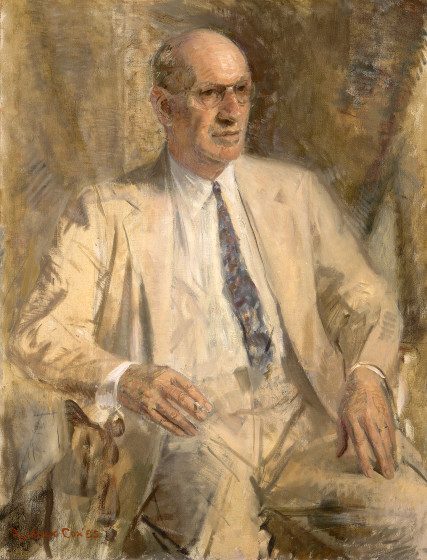
Lessing J. Rosenwald

Rosenwald began collecting prints in the mid-1920s, when some of the great private collections of Europe were being broken up after the First World War. His interest in prints come about by chance when he noticed a print by D. Y. Cameron in a Philadelphia print shop window and purchased it. By 1929, he had amassed a collection of forty-three hundred prints.Around the same time, Rosenwald also collected rare books, which were donated to the Library of Congress at the time of his death. As he had decided early on that he would ultimately donate his collection, the guiding principle of his collecting was to match as closely as possible the great collections of Western prints and drawings in the world. Then-curator of prints and drawings at the National Gallery, Andrew Robinson, called this collection “probably the most comprehensive and finest collection of prints, drawings, and illustrated books ever brought together by a single man” in America.J. Y. Smith, “Lessing Rosenwald Dies, Donated Art, Rare Books,” The Washington Post (June 26, 1979), https://www.washingtonpost.com/archive/local/1979/06/26/lessing-rosenwald-dies-donated-art-rare-books/3eebe53e-0a3a-4e0e-991e-d49fae1b7217/ (accessed July 28, 2017).
Lessing Rosenwald encouraged the National Gallery and other donors to “continue collecting and improving upon the work he had accomplished.” His 1943 deed of gift made this explicit, specifying that should the gallery already own or subsequently acquire by gift or purchase a duplicate print of equal or superior quality to any in the Rosenwald Collection, it would be free to deaccession the Rosenwald item and to use the proceeds for new acquisitions of graphic art. Rosenwald “always expected and hoped that other donors would expand and strengthen the gallery’s collections, improving the holdings in areas he loved but also adding new areas of emphasis which had not happened to appeal to him personally.”Ruth E. Fine, Lessing J. Rosenwald: Tribute to a Collector (Meriden: Meriden Gravure Company, 1982), 7–8.
Profile by Noah Houghton, 2017 summer intern.